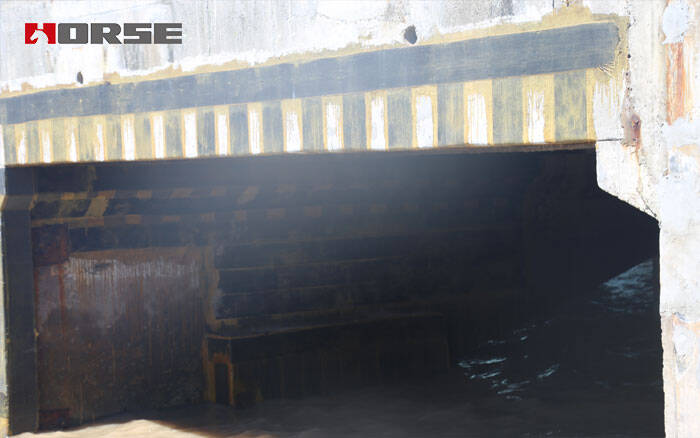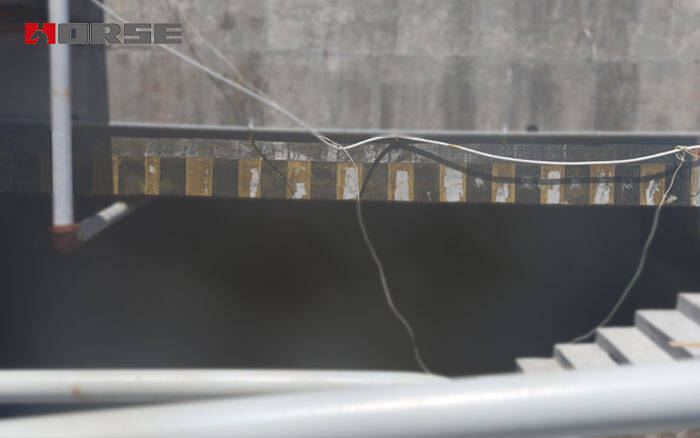Fortalecimiento de puentes
Envoltura de polímero reforzado con fibra de carbono (CFRP) para modernización de puentes
Después de la rehabilitación del puente con envoltura de CFRP, la capacidad de flexión de la sección reforzada aumentó en un 14,3 %. El efecto de construcción de este proyecto es bueno, no hay problemas de calidad, la práctica ha demostrado que las ventajas de la tecnología de estructura reforzada con fibra de carbono son obvias y las perspectivas de aplicación son brillantes.

La tecnología de refuerzo y reparación con polímero reforzado con fibra de carbono (CFRP wrap) es un nuevo tipo de tecnología de refuerzo estructural.
Se refiere al uso de adhesivos de resina de alto rendimiento para pegar tela de fibra de carbono en la superficie de los componentes estructurales de los edificios,
de modo que ambos trabajen juntos para mejorar la capacidad de carga de los componentes estructurales (flexión, cizallamiento) a fin de lograr el propósito de fortalecer y reforzar el edificio.
1 Las ventajas más obvias de la tecnología de refuerzo con envoltura de CFRP son las siguientes:
(1) Alta resistencia, alta eficiencia, amplia aplicabilidad y fácil garantía de calidad. En la actualidad, la resistencia a la tracción de los materiales de fibra de carbono es más de diez veces mayor que la del acero común.
(2) La construcción es conveniente, la eficiencia del trabajo es alta, no se necesita operación húmeda, no se necesitan accesorios en el lugar y la construcción ocupa menos terreno.
(3) Los materiales de fibra de carbono tienen buena resistencia a la corrosión y durabilidad. Después del fortalecimiento y la reparación,
el peso de la estructura original y el tamaño de los componentes originales no aumentan, ni necesitan mantenimiento. La decoración externa no se ve afectada.

2 Tecnología de construcción
2.1 Principio de refuerzo
El principio del refuerzo de CFRP es aprovechar la alta resistencia a la corrosión del CFRP para pegar CFRP sobre la superficie de los elementos de hormigón del puente con una resina adhesiva especial o resina impregnada.
Después del curado, el CFRP forma un nuevo complejo de tensión y trabaja junto con el componente original, desempeñando así una función de refuerzo. (Fibras de carbono continuas de alta resistencia o alto módulo de elasticidad,
dispuestas en haces en una dirección, impregnadas con resina epoxi o curadas sin resina)
2.2 Procedimiento de construcción
Tratamiento de la superficie del componente - aplicación de resina base con brocha - aplicación de pegamento nivelador con brocha para nivelar, pegado de tela de fibra de carbono y pegamento adhesivo para infiltrar completamente
la tela de fibra de carbono - capa de refuerzo del tratamiento de la capa protectora exterior. Tomemos como ejemplo el refuerzo de vigas de hormigón:
1) Tratamiento de la superficie de las vigas de hormigón. Limpie la superficie de la viga hasta que quede expuesta la capa de estructura de hormigón fresco y repare la depresión con mortero de polímero.
2) Aplicación de imprimación, nivelación y adhesivo de fibra de carbono. El propósito es fortalecer la fuerza de unión entre el CFRP y la superficie del hormigón.
3) Envoltura de fibra de carbono adherida. Utilice el cepillo giratorio para esparcir uniformemente la resina de impregnación sobre la superficie de la viga y pegar la tela de fibra de carbono.
4) Protección de la superficie. Se recubre la superficie de la tela de fibra de carbono con una capa de resina base. Una vez que la resina base se seca, se aplica mortero de cemento para proteger la capa superficial.
El espesor de la capa superficial no es inferior a 20 mm.
2.3 puntos a tener en cuenta en la construcción
1) La flexión de la lámina de fibra de carbono a lo largo de la dirección de su fibra provocará la concentración de tensiones y la rotura de la fibra, lo que afectará a su capacidad de resistencia. Si las esquinas de la lámina de fibra de carbono se pegan,
la esquina debe biselarse y pulirse en un arco, el radio del arco no debe ser inferior a 20 mm. Se describe el método de refuerzo de fibra de carbono. Y se mejora la fuerza de aplicación de la ingeniería de refuerzo.
2) La longitud de superposición del CFRP no debe ser inferior a 100 mm a lo largo de la dirección de tensión del CFRP, y el CFRP longitudinal debe extenderse hasta el borde del soporte y anclarse con un aro en forma de U de CFRP
para reducir la concentración de tensión del CFRP.
3) La capa adhesiva no debe ser demasiado fina, su espesor medio no debe ser inferior a 2 mm; la burbuja de aire entre el CFRP y la superficie del hormigón debe estar completamente extruida.
4) El tamaño real del adhesivo del CFRP no debe ser inferior a la cantidad de diseño, y su desviación de posición no debe ser superior a 2 cm en circunstancias normales; el área adhesiva efectiva total no debe ser inferior al 95%.
5) La tela de fibra es un material conductor y la lámina de fibra de carbono debe mantenerse alejada de los equipos eléctricos y la fuente de alimentación durante la construcción.
3 proyecto
3.1 descripción general del proyecto
El puente del río Pu se abrió al tráfico en diciembre de 1989 y ha estado en funcionamiento durante casi 20 años. El puente está diseñado para ser una viga T de hormigón pretensado prefabricada de 12 * 20 m, cada tramo consta de 5 vigas T,
con una longitud total de 244,64 m. Los parámetros principales son: altura de la viga T h = 1300 mm, ancho b = 180 mm, a = 15 mm, As = 5080 mm2, FY = 300 N / mm2, FC = 11,9 N / mm2, FTK = 1,78 N / mm2. A través de la inspección en el sitio y el cálculo teórico,
el puente no ha cumplido con los requisitos y necesita refuerzo. Después de la argumentación de los expertos, los parámetros de refuerzo del hormigón son los siguientes: NCF = 2, TCF = 0,111 mm, Ecf = 250 GPa, fcfk = 2000 MPa, WCF = 180 mm, SCF = 100 mm, HCF = 300 mm.
El modo de refuerzo es en forma de U, el coeficiente de forma de refuerzo de corte de CFRP es 0,85 y la forma de carga es carga uniforme.
3.2 Las comparaciones de los resultados del cálculo de la capacidad portante de la sección normal antes y después del refuerzo se muestran en la Tabla 1. Las comparaciones de las frecuencias antes y después del refuerzo se muestran en la Figura 1.
Comparación de la capacidad portante de la sección normal antes y después del refuerzo
Capacidad portante antes del refuerzo | Capacidad portante después del refuerzo | Aumentar |
| Mu=1524kN·m | Mu=1741.5kN·m | 14.3% |
4 Conclusión
Como se muestra en la Tabla 1, la capacidad de flexión de la sección reforzada aumenta en un 14,3 %. El efecto de construcción de este proyecto es bueno, no hay problemas de calidad,
la práctica ha demostrado que las ventajas de la tecnología de estructura reforzada con fibra de carbono son obvias y las perspectivas de aplicación son brillantes.